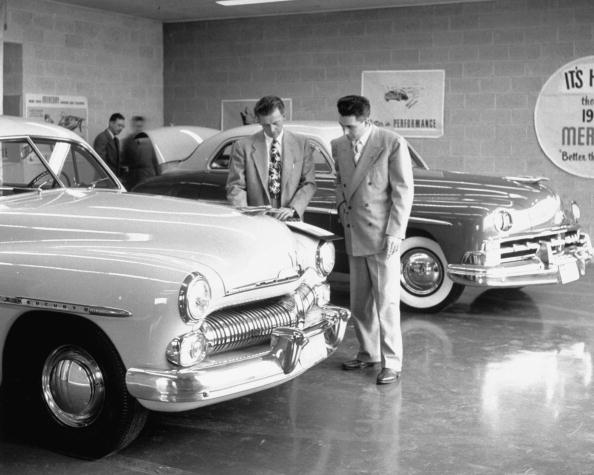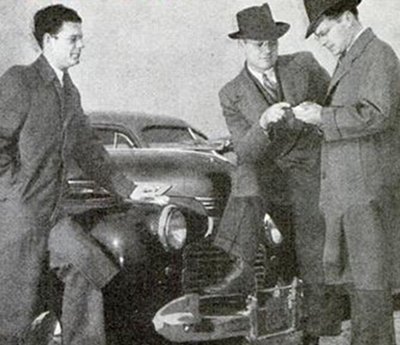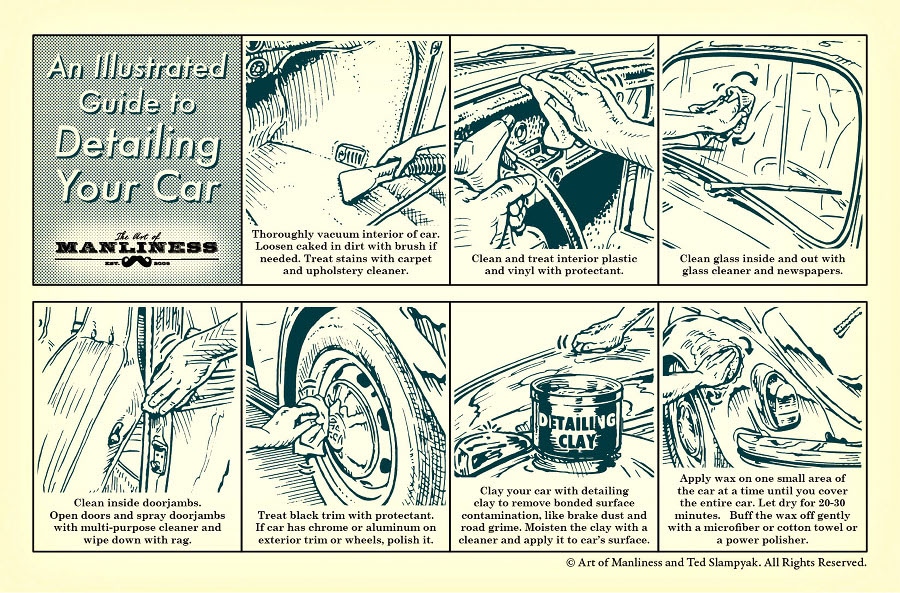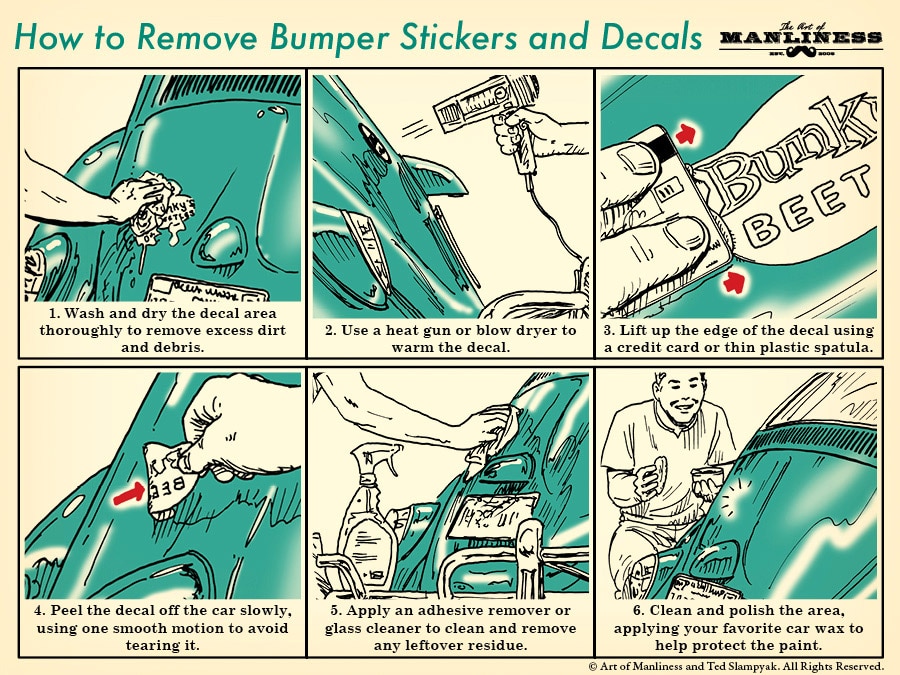
Along with a house and a college education, a car is often one of the most expensive things you’ll ever purchase. Unlike with college tuition (which you can’t negotiate at all), or a house (which you typically negotiate through a real estate agent), haggling over the price of a car requires in-the-moment, face-to-face interaction.
The experience can certainly be a stress- and anxiety-ridden one; most of us don’t practice our negotiating skills on a regular basis, and certainly not with car salesmen, who are often really good at their job. Adding to the anxiety begotten by a lack of experience, is the fact that customers typically only possess the haziest idea of how car dealerships actually make money. This puts them at a true strategic disadvantage.
Knowledge is power, so today we’ll walk you through how car dealerships turn a profit, how this understanding can help empower you in the transaction, and the key strategies for negotiating the best deal on a new or used vehicle.
How Car Dealerships Make Money
A customer wants to pay as little money as possible for their new ride; a car salesman wants to make as much money as possible on the customer’s purchase. To ensure you’re engaging on an even playing field with the dealership, you need to know exactly how they make a profit. Armed with this knowledge, you’ll know where there’s more wiggle room in the negotiation and where there’s not; where there’s flexibility in the deal and where the salesman is going to put more pressure. So let’s break it down.
A car dealership makes most of its money from 4 things:
- Sale of new cars. You might think dealerships make most of their money from these shiny showroom centerpieces, but you’d be wrong. Dealers often sell new cars for close to their invoice price, i.e., what they paid the manufacturer for it. Their only profit then, comes from what’s called “dealer holdbacks,” which the manufacturer pays the dealer upon sale of a car. These holdbacks are typically 2-3% of the car’s invoice or sticker price (the MSRP — Manufacturer’s Suggested Retail Price); so on a $25,000 vehicle, that’s $500-$750. The manufacturer might also offer the dealer other bonuses or incentives. The dealer will only net this cash, however, if they didn’t sell the car to the consumer for a similar amount of money below its invoice price. For that reason, dealerships actually often lose money on the sale of new cars, hoping they’ll make up for the loss in the other revenue-generating categories listed below.
- Sale of used cars. Dealerships often make more money on used cars than new, because there’s a bigger differential between what they bought the car for as a trade-in (or at an auction) and what they retail it for to the consumer. There’s also more wiggle room on the retail price, as the value of used cars varies by year, condition, location, etc., whereas new cars all have the same MSRP. Even though the dealer has to invest in giving a trade-in a tune-up/clean-up, they can still make several thousand (though the profit can also be much lower), simply depending on what they paid on the trade-in and how deep of a discount they’re willing to offer the customer.
- Finance and Insurance. You probably think of a dealership’s finance department as kind of an afterthought, an encore to the closing of the big deal on the car itself. But in fact, dealerships make almost 37% of their gross profits from F&I products — financing, warranties, etc. It’s a very important source of their income.
- Service and Parts. The service sector of a dealership is where it actually makes the majority of its money — about 44% of gross profits, to be exact.
In other words, car dealerships, on average, make less than 20% of their money on the actual sale of cars.
Now that you know the breakdown, let’s put this knowledge to use when negotiating a deal on a new or used vehicle.
How to Get the Best Deal on a New or Used Car
Car salesmen will often try to put the price of the car itself together with the cost of financing/warranties/add-ons/trade-in/ect., so that the bundle deal obscures the price you’re paying for each “product.” But you want to not only break out each cost, but intentionally negotiate all of them.
How to Get the Best Deal on the Price of the Car Itself
Obviously this is the biggest nut; by successfully negotiating down the purchase price of your vehicle, you can potentially save yourself thousands of dollars.
Do your homework, and lots of it. Since it’s such a large purchase that will impact your daily life for so many years, you owe it to yourself to do a lot of research. This article isn’t about which car to buy — you need to figure that out yourself, and you should do that first. Using Consumer Reports (along with your budget) can help you determine which makes and models to go with, and which cars tend to be good value buys.
Once you’ve figured out what you want to buy, use Edmunds and Kelley Blue Book for pricing information. They’ll give you detailed info based not only on year, make, and model, but also condition, mileage, etc. Also keep in mind your location; just like everything else, cost of living impacts car prices. Vehicles are cheaper in the Midwest than on the coasts, especially when it comes to used cars.
Walk into the dealer knowing what other people have paid for the car you want, its invoice price, its MSRP, and your “walk away price”: the most you’re willing to spend.
Play it cool. Even if you’re taking your dream car out for a test drive, don’t act all moony over it. The salesman will know he’s got leverage in the deal and fan the flame of your emotions, so that you stop thinking so rationally about the purchase. Act nonchalant; point out things you don’t like about the car — “It’s nice, but this isn’t the color or trim package I was looking for.”
Let the salesman make the first move. Even with online searches and sticker prices listed on cars, those numbers are rarely ever final. They’re basically a starting point, and everyone involved knows that. So a salesman will probably ask something like “What kind of budget do you have?” or “What were you looking to spend on this vehicle?” Once you throw out a number, though, you can’t go any lower than that, even if a lower price may have been on the table.
So follow Rule #1 of negotiating: make the other guy spit out the first number. If the salesman asks you to name a price first, ask in return, “Well, what’s the very best we can get this car for?” (Bone up on your general negotiating skills by listening to Brett’s interview with former FBI negotiator Chris Voss.)
Know how much you can ask for off. The big question with negotiating a car purchase is how much you can reasonably ask off the retail price.
It varies according to whether you’re buying a new or used car:
- New. As explained above, a salesman isn’t busting your balls when he says he can’t go too low below the MSRP of a new car; he’s really not going to make much money if he does. It’s reasonable to ask for 5% off the invoice price. He’ll probably counter back, and you’ll end up somewhere between the invoice price and the sticker price.
- Used. With used cars, there can be more wiggle room. Throw out something like 20% off. You’re probably not going to get that, but it’s a good place to start negotiating up from.
Be prepared to work your way through multiple offers and counteroffers, and don’t be afraid of “offending” the salesman with your asks. Who cares? You won’t even remember his name a couple years from now. You’re both there to make a deal, and if you do, you’ll both benefit.
Shop multiple dealers. Don’t be afraid to use the tactic of mentioning that you can get a better deal down the street. Just be sure you can back up that claim. Play the dealers/lots against each other and see who wants your business more.
Focus on the total cost, not the payment amount. The salesman might show you a worksheet which lists a monthly payment. By extending the length of the loan 6, 7, even 8 years out, the monthly payment can be shrunk to fit your budget, and the car can seem more affordable than it is. But a long-term loan will simply accumulate more interest over time, and end up costing you big-time money. So just focus on the actual price of the car.
If you have a trade-in, don’t mention it until the end. If you’re trading in a vehicle, you’ll want to have done your homework on that too to determine what you can expect to get for it. But you don’t want to mention the fact you’ll be trading in your old vehicle right off the bat.
Reason being?
You don’t want the trade-in value to make it look like the new car actually costs less, which the sales guy will inevitably try to do by sneaking that in as a line item on a cost sheet. And a salesman can offer you a sweet deal on the trade-in, which can distract you from the fact he’s offering a not-so-sweet deal on the new car you’re looking to purchase.
If the salesman asks if you’ll be doing a trade-in early on, defer that discussion by saying something like “Yes, I have a vehicle to trade in, but I’d like to nail down the price of the new car before getting into that.”
The same thing goes for other rebates and offers that may be on the table — these should be treated as bonuses, on top of the “normal” deal you would have negotiated on the car anyway; don’t let these bonuses become the discount.
Know ALL the numbers, and ask about the “out-the-door” or “off-the-lot” price. When presented with a price, be sure it’s detailed and includes all the fees and extras. You want to be sure you’re seeing what’s called the “out-the-door” or “off-the-lot” price — how much it’s going to cost to drive the vehicle off the lot and into your garage. It’s often a different number from the sticker price.
Consider other negotiating fodder. If the price is stuck — the sales guy really can’t come down any more than he already has, and it’s still a bit higher than you wanted — consider negotiating other items that can help offset some of that cost. At this point you can bring up your trade-in, and try to negotiate it higher than what they first offered. You can also negotiate special features (leather seats, towing package, etc.) or a maintenance package — have them throw in a year or two of oil changes (although be realistic about how willing you are to drive to the dealership maintenance shop for this, rather than your neighborhood Jiffy Lube) — or perhaps the spendy 30K, 60K, or 90K servicing.
Most things about the transaction are negotiable — you just can’t be afraid to ask.
Don’t be afraid to walk away. Always keep in mind that you are in charge of this transaction. You can’t be forced into buying a car, even though it can sort of feel like that after an hour or two of negotiating. If you can’t arrive at a mutually agreeable deal, walk away; the salesman may suddenly decide he can meet your price after all, or he may follow up with you later if they’re having a special sale. If not, it just may not be the vehicle, or the dealership, for you.
What About No-Haggle Pricing?
Knowing how uncomfortable the negotiating process is for many consumers, a lot of dealers and speciality lots now advertise “no-haggle pricing.” In theory, this means the sticker price is the price you pay for the car — no need to sweat it out with a pushy salesman.
Is it really no-haggle though? And are prices inflated for this convenience?
In general, that advertising claim does indeed bear out. They really won’t negotiate on the sale price of the vehicle. If they did allow wiggle room, word would get out, and they’d no longer be able to claim that they were a no-haggle lot.
Is it worth it though? That depends, of course, on the prices! Since you’ve done your homework, you know how much you want to spend, and what a good deal is. If you can find a good deal at a no-haggle lot, and not have to worry about the negotiation process to boot — great! If you can’t find a good deal, head to another lot, and see if they can beat whatever the no-haggle guys are offering.
Know, too, that only the car’s sticker price is non-negotiable. Loan rates, maintenance packages, trade-in value, and car upgrades are still negotiable.
For some folks, taking the headache out of negotiating will be worth a small price difference. For others, who like the little bit of battle involved and want to save every penny possible, it surely won’t be. Ultimately, it just comes down to the price of the car.
How to Get the Best Deal on Financing and Add-Ons
As mentioned, most people think that haggling over the price of the car itself is the only “real” part of making the deal, and that all that paperwork business you do in the back afterwards is just the anti-climatic wrap-up. Once the price of the car is settled, you can kind of relax, right?
Wrong.
As explained above, car dealerships make a significant portion of their profits from financing, warranties, and other add-ons. Therefore, the dealer may actually put more pressure on you to sign up for these financial products, than they did in trying to get you to buy the car. So stay alert when you step out of the shiny showroom and into the dealer’s fluorescent-lit offices.
If needing a loan, consider getting it from an outside provider. Just like everything else in this process, the interest rate the dealer offers you on a loan is negotiable. If you secure approval for a loan from a bank first, you can negotiate that rate as well, use it as leverage with the dealer’s finance guy, and ultimately go with whichever is better.
Keep in mind that if a dealer knows you’re not going to be financing through them, they’ll be less generous when negotiating the price of the car itself. So best not to reveal this information until after you’ve shaken hands on that part of the deal.
Don’t buy ANY add-ons. In addition to being sold on signing up for the dealership’s financing plan, you’ll also get the spiel about a million different “crucial” add-ons like warranties and various protections for your new car — from undercoating that protects its underside, to seat protection which guards against spills, to free windshield replacement (which most insurances cover, sometimes even on an annual basis).
As a general rule, don’t buy any of these. If anything is really important to you, it can often be found elsewhere for cheaper.
The financing person will probably make it seem like the end of the world if you don’t buy these things. Remember, that’s basically their entire job, and they’re probably good at it. Don’t take their bait. It will be awkward, but just keep saying you’re not interested.
With this part of the transaction, as with the process as whole, stand your ground, informed consumer!
Be sure to listen to our podcast on all things haggling, with a former FBI hostage negotiator:
Tags: Cars





